Infrared, so far
Can human see infrared? No.
Can camera see infrared? Yes.
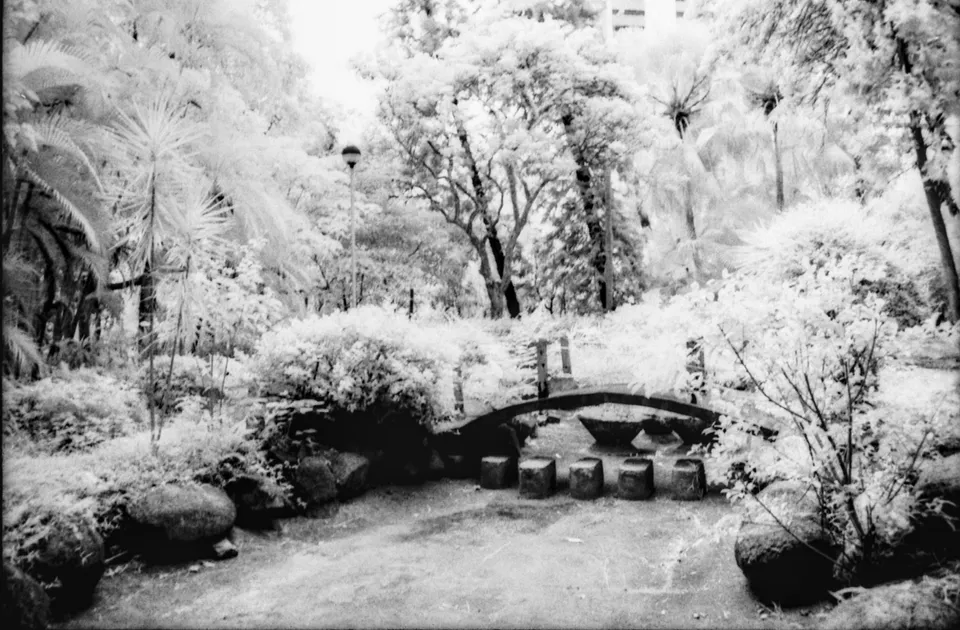
To be fair, camera doesn't care. It's just a light-tight box that lets light shine onto a recording medium, be it a strip of film or a digital light sensor.
Since I have started shooting film I had been hearing about the legendary Kodak Aerochrome film that produces surreal images rendering all vegetations pink.
Kodak no longer make them and because people kept talking about it, the remaining few rolls of this stuff are ridiculously expensive. For the same price I would have gone for a complete set of Mamiya RB67 Pro S instead.
Aerochrome works by capturing infrared and represent that wavelength in the human visible range, red/pink in this case.
You know I did trichrome which is more or less the same thing, just in post-processing.
And there exists black and white film that captures visible light and with extended sensitivity into the infrared range: Rollei IR400.
With the information from Internet people who tried it before, I was able to produce a passable result.
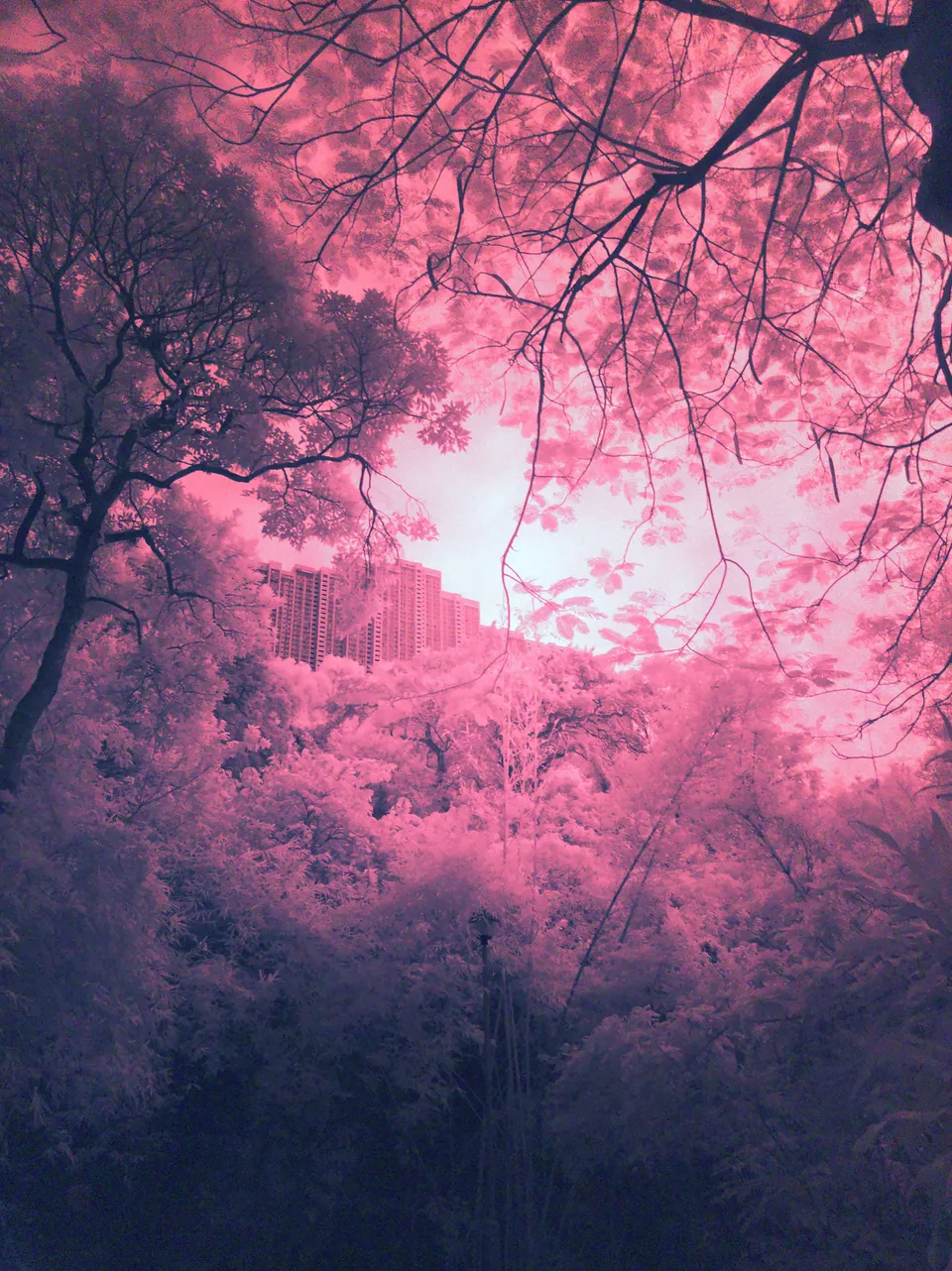
Wait, that doesn't look Aerochrome, not even looking like film!
Turns out I can use my phone. You know that little trick you can use phone camera to check a hotel room for hidden camera by looking for the infrared light that any hidden cameras are emitting. Your phone can capture infrared!
To test out an infrared shot, shoot using the phone first to see how it'll turn out, then I can use my filters to take 3 filtered shots for the trichrome result.
You may wonder if phone camera can detect infrared, why aren't everybody doing infrared photography already? Everyone (not really, but you get me) has a phone.
Because an infrared filter is required.
The IR720 filter allows for, guess what, light of wavelengths longer than 720nm can go through, while most of the visible spectrum lies at wavelength shorter than 720nm. There are other filters for different wavelengths for different effects.
As a result, most visible light will be blocked by the filter and your phone will capture a bit of visible light plus lots of infrared light by proportion.
If you're just starting and want to see what it's like shooting infrared, simply using your phone and an infrared filter is enough.
Now switch out the phone sensor with film, an infrared-sensitive film to be specific, and a camera featuring automatic exposure, we can start shooting some photos for trichrome.
For an Aerochrome-esque photo, infrared light maps to red color, red maps to green, and yellow-green maps to blue. The blue sky will thus appear quite dark and living vegetation appear quite red/pink.
Joshua Bird has written an excellent post explaining why each filter is used.
Because different filters are used, a camera with through-the-lens automatic exposure is very handy for assuring a consistent brightness in each image for the trichrome process later. However, not all light meters are sensitive to infrared. If your camera thinks it's total darkness when the IR filter is on, switch to manual and overexpose by 3~5 stops.
Shoot in the same order with the filters, so that in post-processing you can easily tell which color of filter was applied to which image.
Shoot with the color filters first, because when it comes to the infrared filter, you need to slightly shift the focus of the camera. Many cameras and lenses from the 1950-1990s have this "R" marking, usually offset very little next to the normal focusing mark, indicating where infrared would be focused. Turn the focusing ring to focus at R, then take the shot with the infrared filter.
I pushed my Rollei IR400 by one stop during development and it turned out OK. I then scanned the film and followed a tutorial to align and produce colorized result using GIMP.
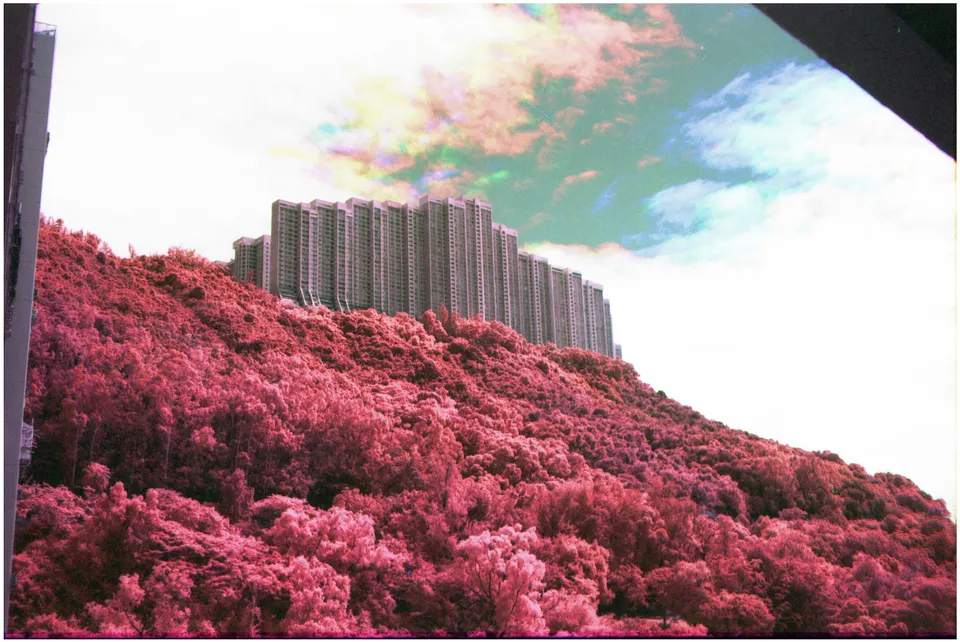
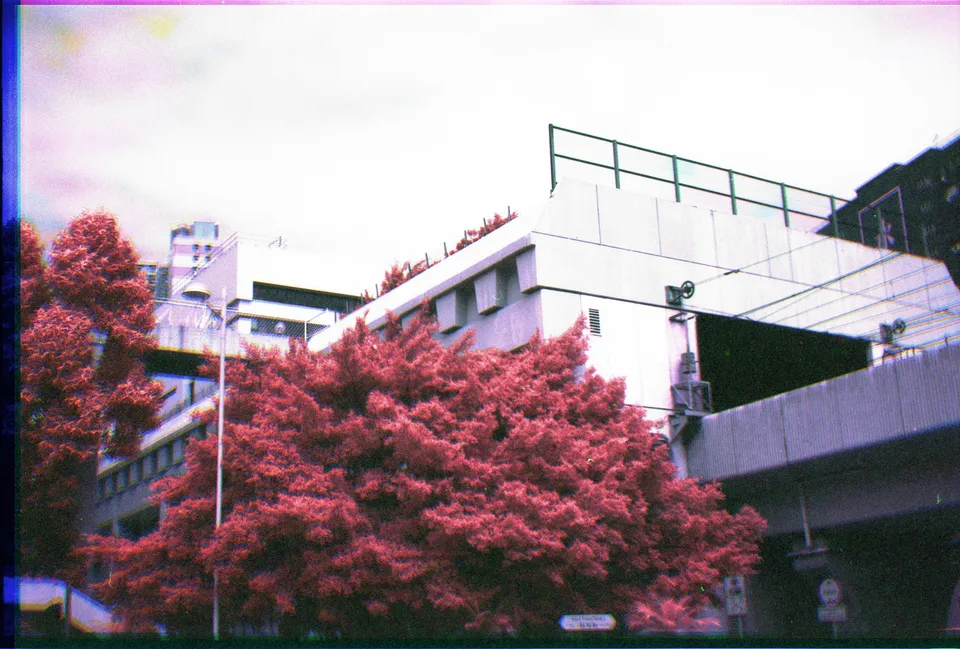
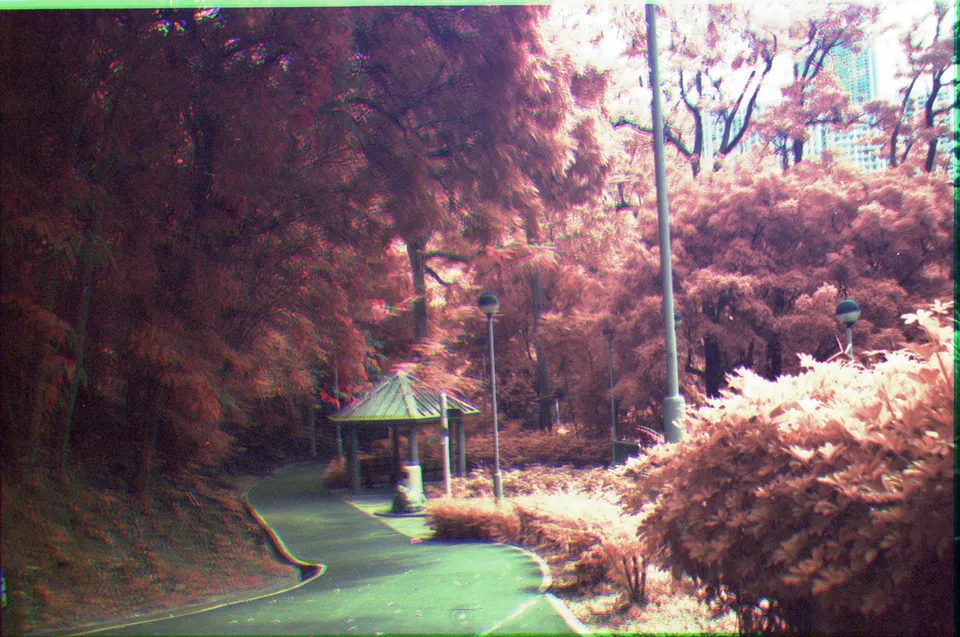
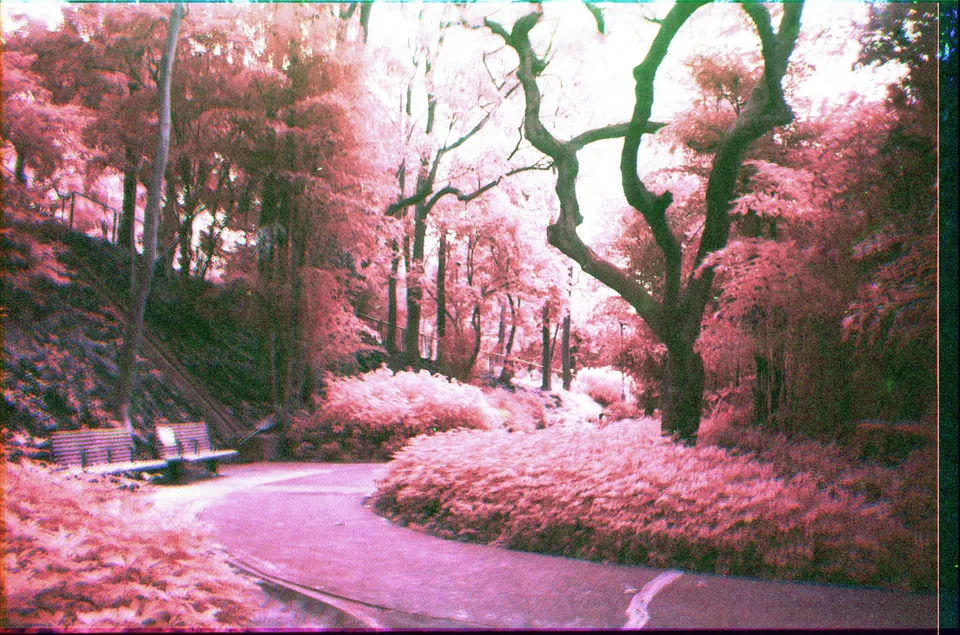
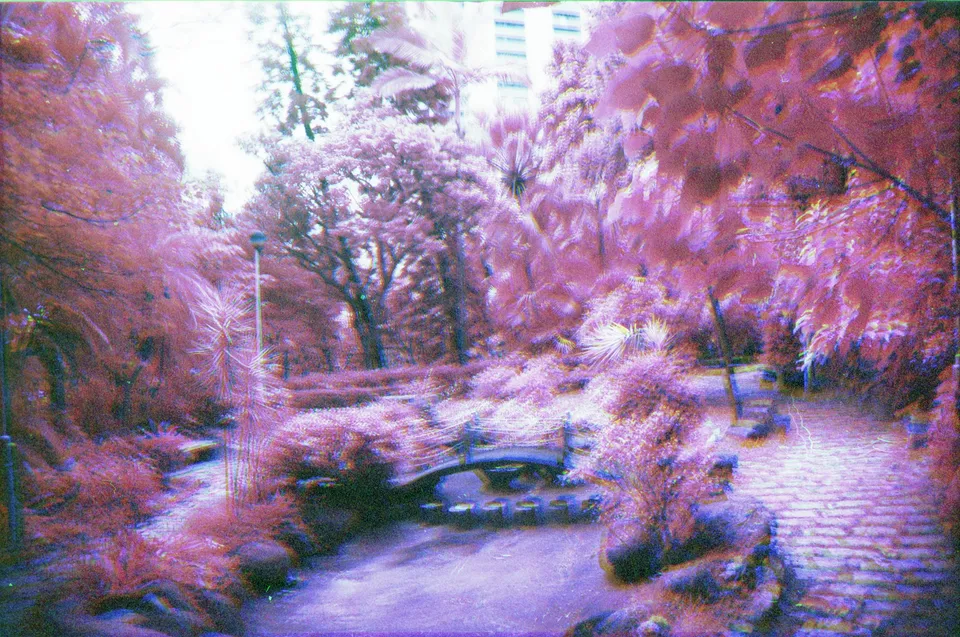
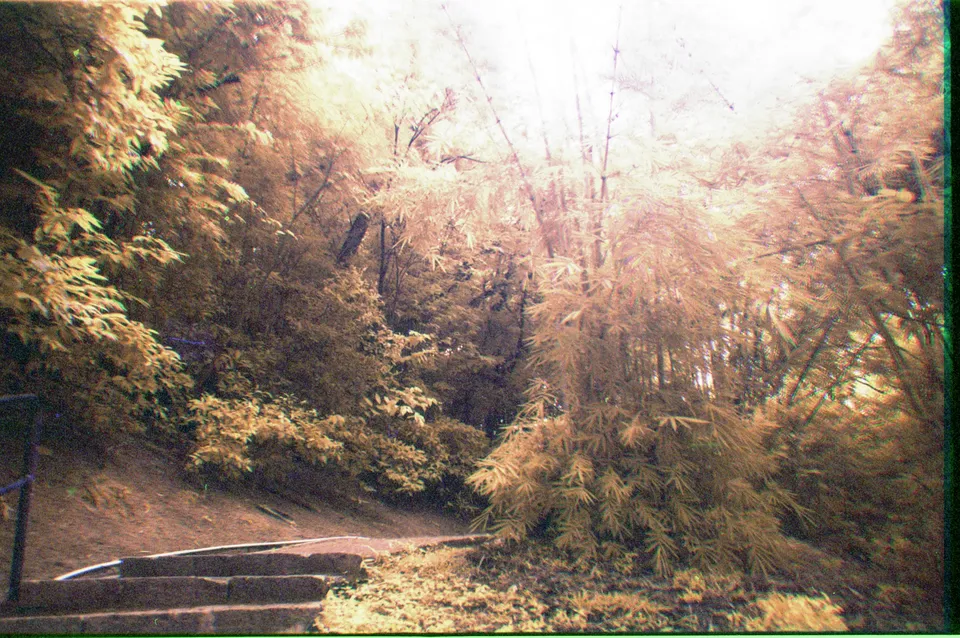
And they don't look very Aerochrome. I can see many shots out of focus, misaligned and the color (aka Harris shutter) were all over the place even with automatic white balance adjustment. The difference in brightness between each shot has messed up the balance of each color, which can only be fixed if spot metering was done through the filter consistently on a certain color-neutral object (say raw concrete).
Infrared photography itself is fun and is able to deliver amazing landscape shots that are seen online. Aerochrome, in my opinion, is better recreated by using modded digital cameras to save on film and effort.
Will I shoot infrared again? Definitely, perhaps in 6x9 format on landscapes to capture all those details. Rollei IR400 has very fine grains. I probably won't shoot infrared trichrome again though, too much work.
For colorful infrared photo, it's also possible to modify an existing digital camera to remove the IR filter, or buy an already modded one…